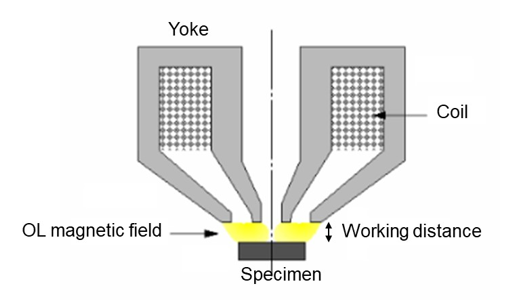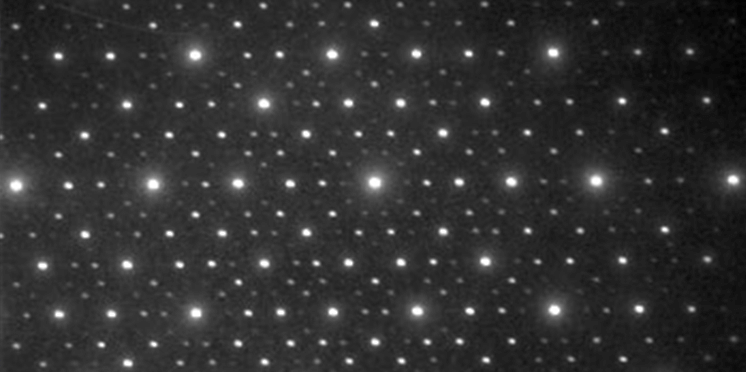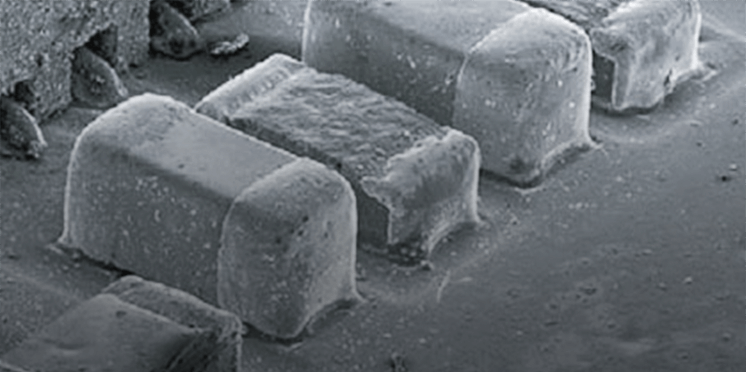セミインレンズ形対物レンズ
セミインレンズ形対物レンズ
semi-in-lens objective lens
[目次:装置]
高分解能SEM用の対物レンズの一種。
インレンズ型対物レンズの欠点を改良するために作られたレンズ。図に示すように、ヨークの開口部がレンズの下部にあり、レンズの磁場は対物レンズ下部に作られる(黄色部)。レンズは短焦点のレンズになり、球面収差と色収差がインレンズ型対物レンズ並に小さくなり、高分解能が得られる。試料はレンズの外に置かれるので、大きな試料を扱うことができる。ただし、磁性体試料はレンズの強い磁場内に置かれるので、磁性体の観察には適さない。試料から放出された二次電子検出にはTTL検出器が用いられる。
EDSの装着は可能である。EBSDの装着は可能ではあるが、回折パターンがレンズ磁場の影響で歪むため、その補正機能が必要である。セミインレンズは、多くのFESEMに搭載され、高分解能志向のユーザーにより使用されてきた。

図 セミインレンズ型対物レンズの構造
One of the objective lenses for the high-resolution SEM.
The semi-in-lens objective lens has been created, so as to improve the disadvantages of the in-lens objective lens. As shown in Figure, the opening of the yoke is located below this lens and thus, a lens magnetic field is created below the objective lens (indicated by yellow region). Since the semi-in-lens objective lens provides a short focal length, this feature achieves small spherical and chromatic aberrations of the semi-in-lens objective lens comparable to those of the in-lens objective lens, and a high-resolution SEM image is obtained. Since the specimen is placed outside the lens, a large specimen can be handled.
However, a magnetic material (magnetic specimen) is placed in a strong magnetic field in the lens, thereby not suitable for observation of the magnetic specimen. To detect secondary electrons emitted from the specimen, the TTL (through-the-lens) detector is used.
For the SEM instrument equipped with the semi-in-lens objective lens, it is possible to attach an EDS detector. Also an EBSD detector can be attached, but a diffraction pattern acquired by EBSD is distorted due to the lens magnetic field, thereby requiring a compensation function for this distortion.
The semi-in-lens objective lens has been installed in a great number of FE-SEMs, so as to meet the needs of SEM users focusing on high-resolution imaging.

Fig. Schematic of the semi-in-lens objective lens
関連用語から探す
説明に「セミインレンズ形対物レンズ」が含まれている用語






